A-positive
1997
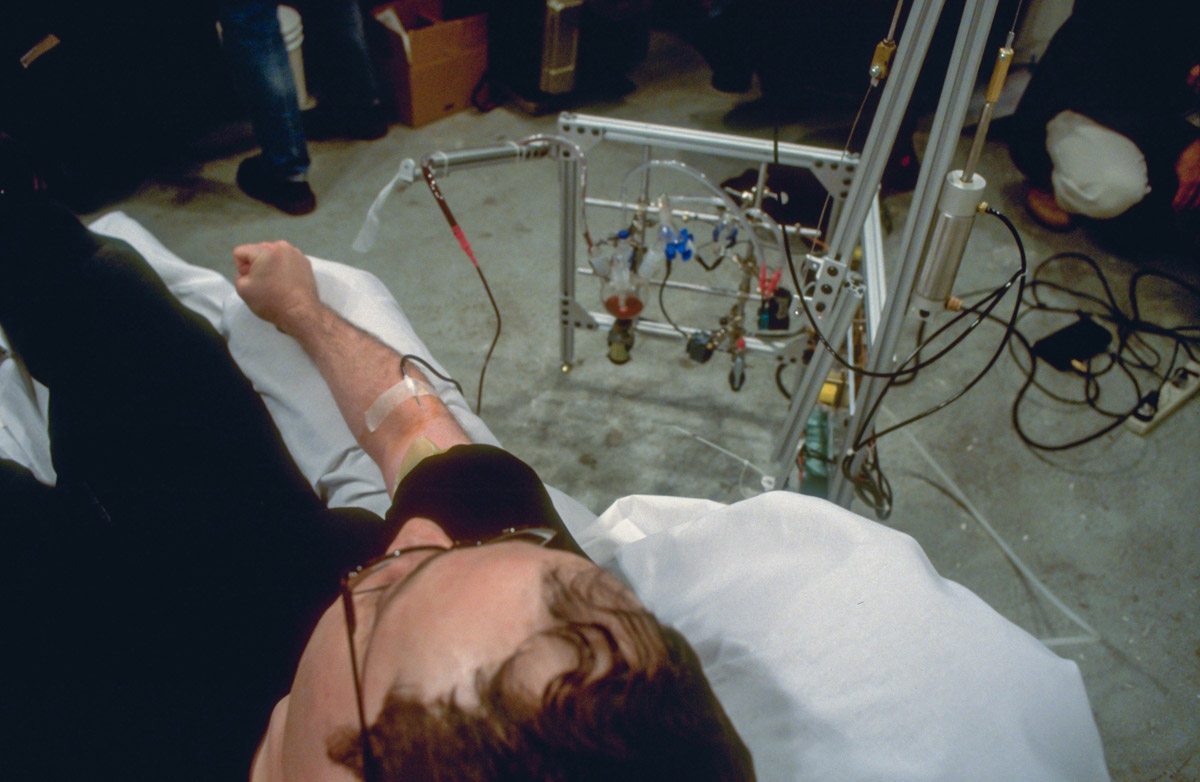
Art at the Biobotic Fontier
A-positive, a dialogical event created by Ed Bennett and myself, probes the delicate relationship between the human body and emerging new breeds of hybrid machines that incorporate biological elements and from these elements extract sensorial or metabolic functions. The work creates a situation in which a human being and a robot have direct physical contact via an intravenous needle connected to clear tubing and feed one another in a mutually nourishing relationship. To the new category of hybrid biological robots we ascribe the general epithet "biobots." Because of its use of human red blood cells, the biobot created for A-positive is termed a "phlebot".
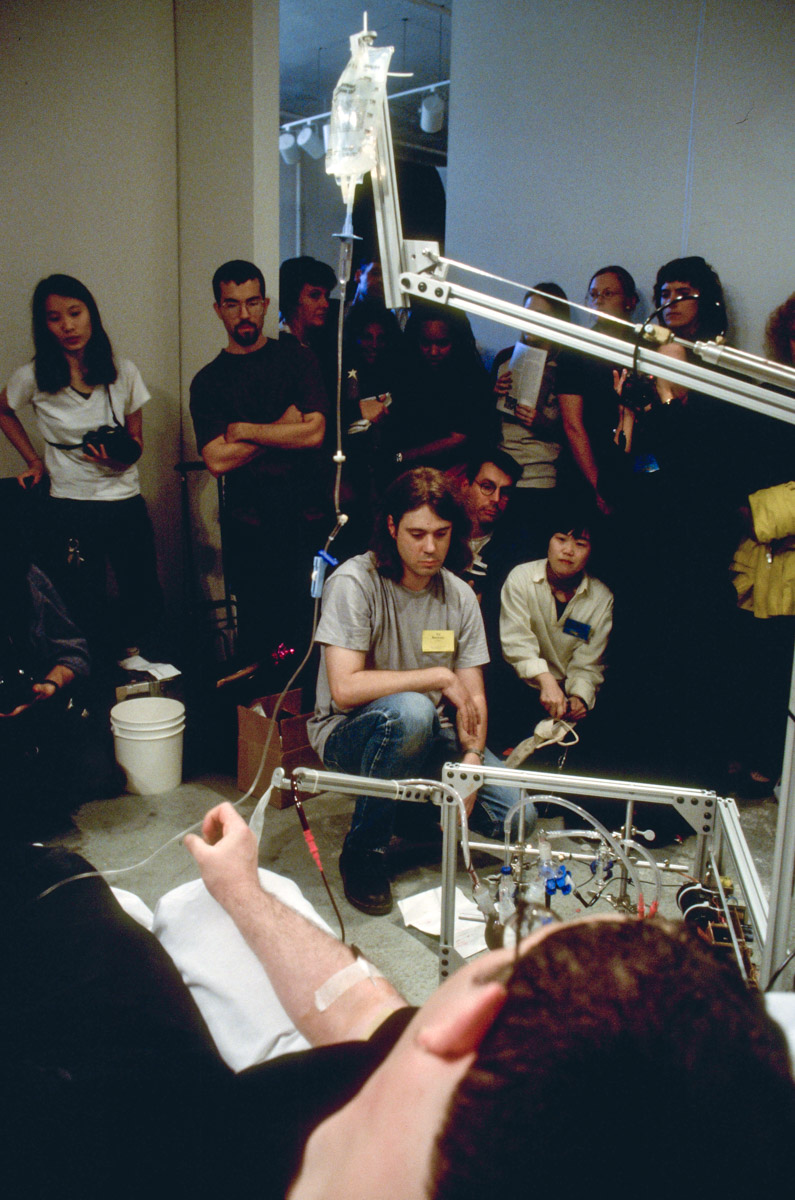
In A-positive, the human body provides the robot with life-sustaining nutrients by actually donating blood to it; the biobot accepts the human blood and from it extracts enough oxygen to support a small and unstable flame, an archetypal symbol of life. In exchange, the biobot donates dextrose to the human body, which accepts it intravenously. As the blood circulates through the human body, it transports oxygen from the lungs to body tissue and carbon dioxide from body tissue to the lungs. As blood passes through the lungs, oxygen molecules attach to the protein hemoglobin (which is bright red in color and therefore responsible for the blood's tincture). Along the way the hemoglobin releases the oxygen to the cells. The "empty" hemoglobin molecules then bond with the tissue's carbon dioxide transporting it away. In A-positive, oxygen is extracted by the phlebot and used to support the erratic flame. The conceptual model created by the work is far from conventional scenarios that portray robots as slaves that perform difficult, repetitive or humanly impossible tasks; instead, as the event unfolds the human being gives his own blood to the biobot, creating with it a symbiotic exchange.
This work proposes that emerging forms of human/machine interface penetrate the sacred boundaries of the flesh, with profound cultural and philosophical implications. The event reflects on the condition of the human body in the new context in which biology meets computer science and robotics. We can no longer regard the body as isolated from firm contact with the technoscape or protected from the biological surveillance of biometrics. Not even DNA or blood are immune to the invasion of the body by technology. A DNA computer has been successfully demonstrated through the joint effort of a biologist and a computer scientist. Instead of electrical impulses, it employs deoxyribonucleic acid, or DNA, to control the commands a processor gives to a computer and uses nucleotides, the basic units of DNA, to replicate the actions of a processor. The technologies that condition our imaginary and sensibility at the end of the century (including nanotechnology and genetic engineering) also penetrate our skin – our blood stream, even – enabling new forms of therapy. Miniaturized electronic devices and new chemical compounds are invading (and cohabiting) the physical structure of an organism. For example, a new technology aptly called "electroinsertion" proposes to increase a drug's effective potency manifold by binding specific drug molecules directly to the red blood cells, rather than adding a drug to the circulatory system. This and other related developments clearly reveal that technology has already permeated the body in subtle ways. The dialogical situation created in A-positive quite literally "wires" the human being to the robot, with four connection points in a prototypical biological LAN (Local Area Network). Once extracted and released inside the sealed chamber, the oxygen supports the minuscule glowing mass of burning gas, the symbolic "nanoflame".
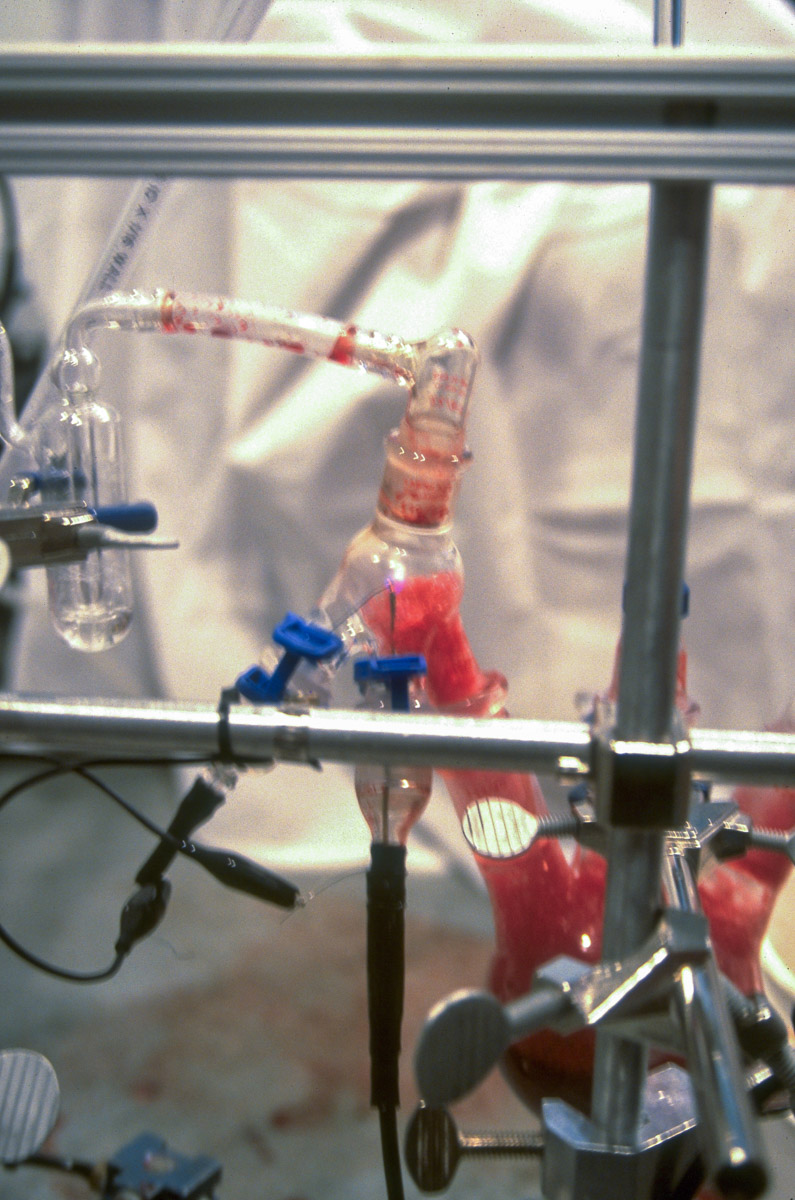
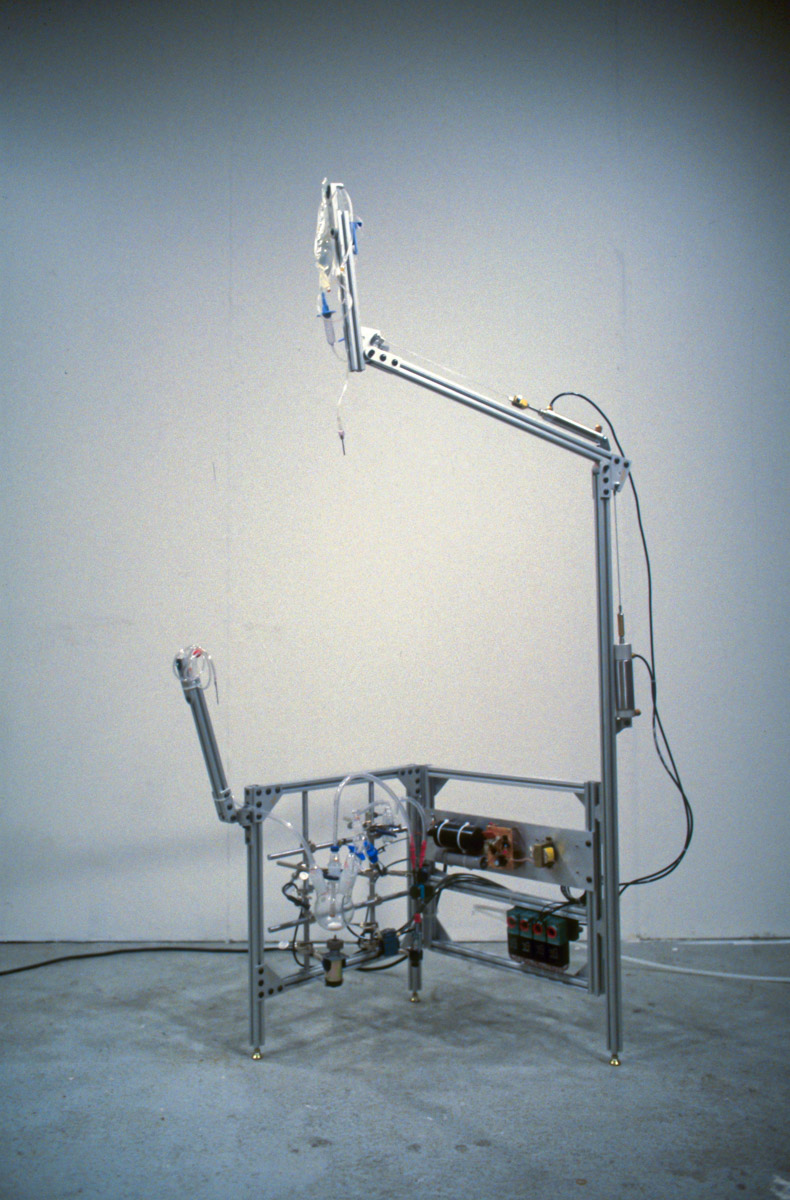
The body is one of the most traditional subjects in art, one that continues to fascinate us in the present for entirely different reasons that it did in the past. Today, instead of portraying the body as predominant or privileged (figure) in contrast with the environment (background), we investigate the politics and the psychological dimension of our passage into a digital culture. As we realize how close technology is to the body, or how deep it already is inside the body, we must also grasp that the use of the master/slave model in robotic science is more than just a very unfortunate choice of words. It assumes that machines are slaves, with all the connotations of the word, perpetuating the idea that certain kinds of creatures must provide forced labor, only this time the creatures are electronic. While it might be easy to dismiss such considerations on the basis of the fact that machines do not have organic life, human-like intelligence, or a will of their own, the increased presence of electronic and computational devices inside the human body and the accelerated investigation of biological directions for robotics and computer science suggests that the gaps are being slowly narrowed beyond what we might be willing to admit or perhaps accept. In this sense, one might speak of the "ethics of robotics" and reconsider many of our assumptions about the nature of machines in the biobotic frontier.
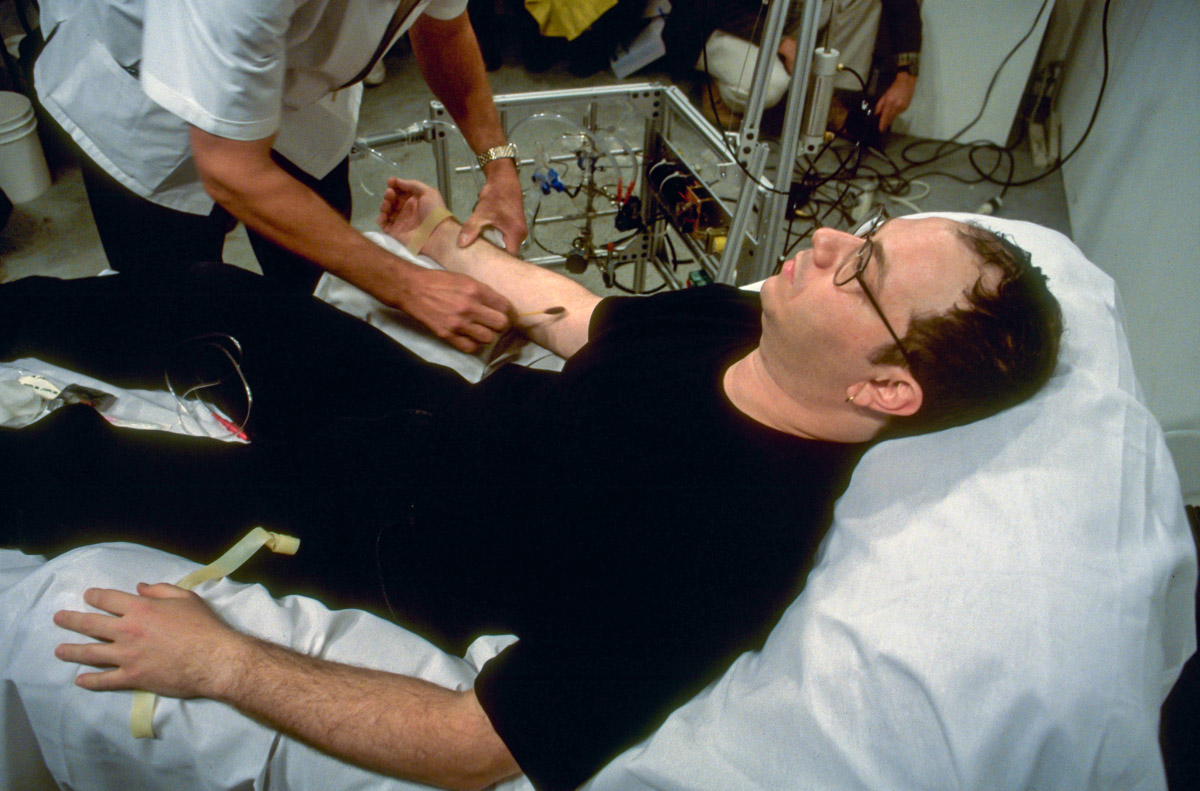
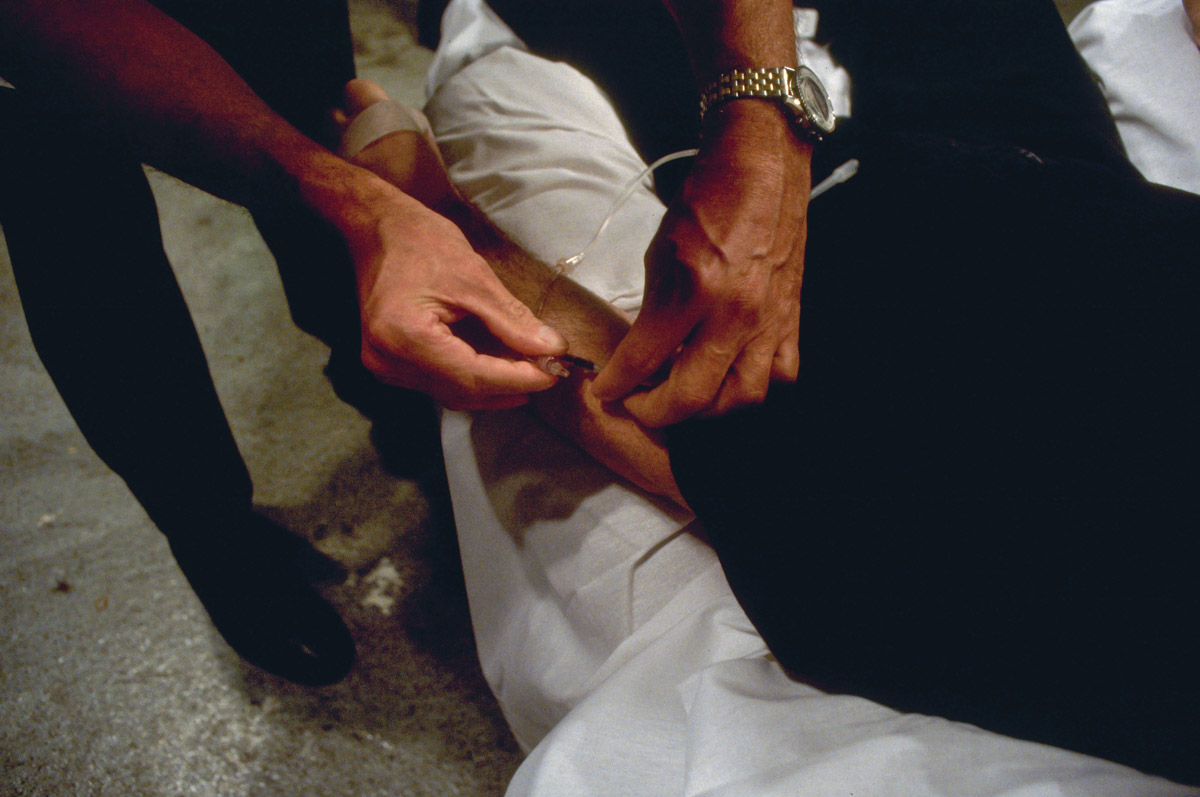
A-positive does away with the metaphor of robotic slavery and suggests a new ecosystem that takes into account the new creatures and organic devices that populate our postorganic pantheon, be they biological (cloning), biosynthetic (genetic engineering), inorganic (android epistemology), algorithmic (a-life), or biobotic (robotics). We have always asked what can machines do for us. Now might be the right time to ask what we can do together. We are no more masters of our machines than we are at their mercy. We are as intrigued as we are perhaps fascinated and terrified by the notion that we are embodying technology. We are intrigued because of our innate and insatiable curiosity about our own limits; we are fascinated because of the new possibilities of an expanded body contemplating the notion of eternal life; and we are terrified because these technologies, originally developed to aid ill or physically impaired persons, are in fact not desirable for a fully healthy body and therefore renew our fear of confronting our own mortality. Albeit for distinct reasons, art today partakes some of the same concerns shared by fields conventionally seen as extraneous to the "fine arts," such as biology and robotics. We can now speak of a "bio art". As art participates in the wider debate and circulation of ideas we witness in culture at large, it can help us develop new conceptual models and perhaps influence the new kinds of synergies emerging at the frontier where the organic and the digital meet.
Special thanks to Steve Waldeck, Dr. Richard Cooper, Dr. William Dam, Anna Yu, and Carlos Fadon.